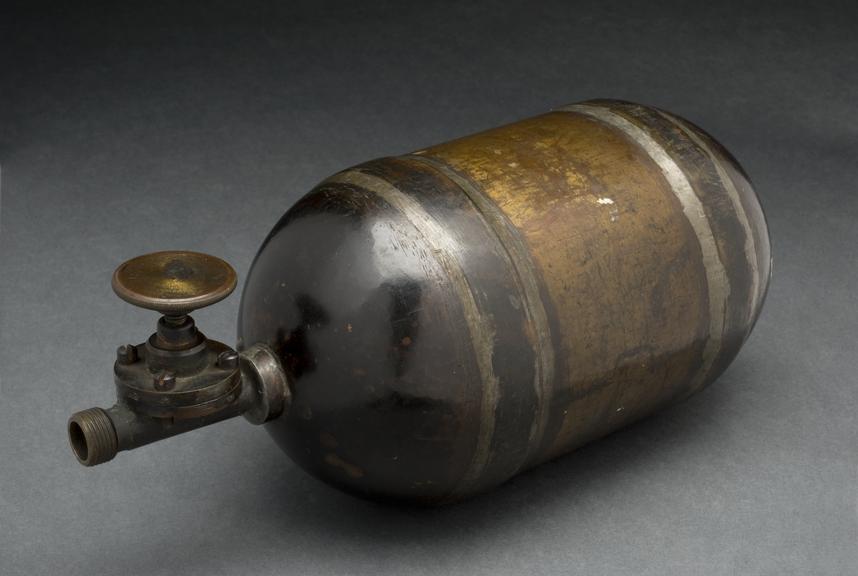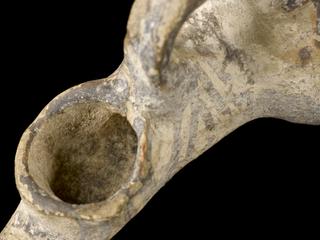

Empty nitrous oxide cylinder, used in dentistry(?), 1840-1868
This gas cylinder, now empty, once contained nitrous oxide or ‘laughing gas’. In the late 1860s, nitrous oxide replaced chloroform as the preferred anaesthetic in dentistry.
In England in 1868, George Barth and J Coxeter, of Coxeter & Son, a surgical and medical supplier, developed a way to turn nitrous oxide from gas to liquid so it could be stored easily in cylinders and sold commercially. Two years later, Coxeter & Son began selling cylinders of nitrous oxide for 3 d per gallon in exchange for empty cylinders.
Details
- Category:
- Anaesthesiology
- Collection:
- Sir Henry Wellcome's Museum Collection
- Object Number:
- A625425
- Materials:
- copper
- Measurements:
-
overall: 145 mm x 330 mm 145 mm, 2.46kg
- type:
- gas cylinder
- credit:
- Loan, Wellcome Trust




